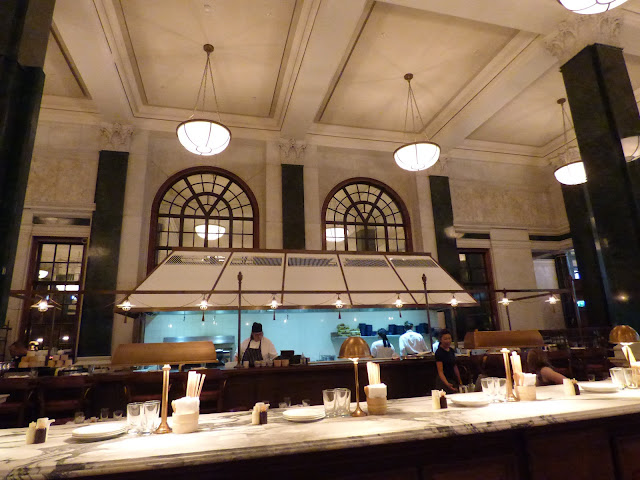When it was first announced, The Ned was expected to be 2017's answer to Chiltern Firehouse - London's new hangout for the rich and famous, while the rest of us pushed our noses up to the windows with no hope of ever actually getting inside.
It's a members' club and hotel by the people behind Soho House, and yet it seems to have entered the London scene with more of a whimper than a bang, slipping surprisingly under the radar - or perhaps its EC postcode is just too many stops on the Central line for the paparazzi fodder of west London.
"Like Harrods food court without the tourist crowds" was our initial impression on our first visit, and we weren't alone. The recurring Harrods comparisons might have something to do with the particular shade of green used on the ceiling height marble pillars.
Inside, it's surprisingly open plan, as far as the triangle shaped building will allow. In fact, it's not unlike the Westfield food court, albeit with an atmosphere that's more City boy din than McNuggets and fries. The space had been derelict for eight years before The Soho House team took it on, and its vastness only amplifies the raucous atmosphere.
For a members's club, they're surprisingly unscrupulous about who they let in - I've been in twice now without any drinks or dinner reservations. Presumably the members' area is squirrelled away on another floor, away from the commoners.
Next time you're in the Bank area, take a couple of minutes to have a peek inside. The main entrance is on Poultry but I've managed to get in via the side entrance on Princes Street. I've even made it up to the sixth floor terrace. I'm certainly not encouraging you to do so, but if you were so inclined, the lifts from the ground floor are opposite the main reception desk in the centre. Out of the lifts, you want to do a right and follow the corridor all the way to the end, and there's a cracking view over Poultry and the Bank junction.
As for the food and drink from the six restaurants and bars, I haven't actually indulged in that one yet, but if the ever-reliable Marina O'Loughlin is anything to go by, this may be a case of look, don't touch - although I'd be delighted to have that one proved wrong.
The name, by the way, comes from architect Sit Edwin 'Ned' Lutyen, who was responsible for the original design of the building. But if all you can think about it a certain Mr Flanders, that's OK too.







































